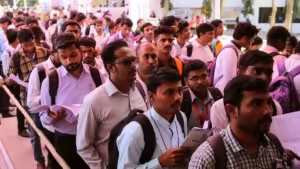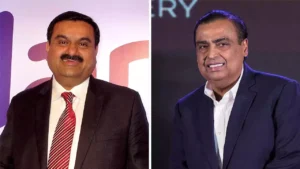Budget 2024: Full Speech by Finance Minister Nirmala Sitharaman

2024 budget of July, the first budget of the third term of the Modi government, is in front of us. Although it is a union budget for the whole of India, the focus is more on some states. As the Finance Minister (FM) says, “We will formulate a plan for the all-round development covering Bihar with ₹26,000 crores for the Bihar Government and Andhra Pradesh Government. The Andhra Pradesh Session Act for Andhra Pradesh and its farmers’ capital investments will be provided.”
Infrastructure and Development
Significant funds will be required to rebuild many fallen bridges, and there are many new initiatives in this budget.
Taxation Changes
Some taxes were reduced while many were increased. Many new schemes ranging from employment to loans were introduced. There is a lot in this budget for students, employees, business owners, and investors which will help them in the future.
Income Tax
I presented the budget for 20242025. I stand to save up to ₹7,500 in income tax. In Budget 2024, the maximum focus was given to employment, with many new schemes introduced.
Employment Schemes
Three schemes are designed around EPFO:
- Freshers Scheme: For those who have not worked anywhere before, the government will give their one month salary up to ₹15,000, provided directly in different tranches over 3 years. Freshers with a joining salary below ₹1 lakh are eligible.
- Manufacturing Sector Freshers: For those joining the manufacturing sector, their salary up to ₹24,000 is capped at ₹6,000 by the government. This benefit will be available for the first 2 years, with a reduction after that but continued benefits for 4 years.
- Nonmanufacturing Sector Employers: Employers increasing their employee strength will get a subsidy of up to ₹3,000 per month for the increased employee strength.
Internship Scheme
To promote employability, the government has introduced an internship scheme targeting 1 crore youth for internships in the top 500 companies. Government companies will be incentivized to participate.
National Apprenticeship Promotion Scheme (NPS)
The NPS National Apprenticeship Promotion Scheme has been running for a long time, and now this new scheme has been introduced.
Student Benefits
The government has introduced assistance for students in obtaining collegefree loans up to ₹10 lakhs for higher education, with an evoucher worth ₹3.
Land Reforms
Nirmala Sitharaman discussed several land reforms, encouraging state governments to reduce stamp duty. The current stamp duty ranges from 3.3% to over 8%. Reducing stamp duty is expected to increase land registries and transparency in land transactions. Two initiatives were announced:
- Rural Lands: A land base will be allotted.
- Urban Lands: A digitization scheme will be implemented.
Investment Schemes
For parents investing for their children, the government has introduced NPS Vatsalya as a substitute for PPF and Sukanya Samriddhi Yojana. Investments can be distributed among equity, debt, and other asset classes.
Precious Metals
An unexpected subsidy has been introduced for precious metals. The custom duty on gold and silver has been reduced from 10% to 6%, which will lower the prices of these metals.
PM Surya Ghar Free Electricity Scheme
The government announced this scheme in the interim budget of February, aiming to install solar panels on 1 crore houses in the coming 5 years.
Stock Market Impact
Changes in short term and long-term capital gains tax rates have been made, impacting stock market participants. STT on futures and options has been increased, making this budget less favorable for stock market investors.
Startup Benefits
Two small benefits have been introduced for startups:
- Abolishment of Gospel Tax.
- Reduction in Tax on Foreign Entities: Reduced from 40% to 35%.
NPS Contribution
Under Section 80 CCD 2, the NPS contribution of the employer up to 14% was taxfree in the government sector. This has now been increased to 14% for private employees as well.
New Tax Regime
The new tax regime, introduced a few years ago, has become popular. The revised rates are as follows:
₹0 to ₹3 lakhs: No tax
₹3 lakhs to ₹7 lakhs: 5%
₹7 lakhs to ₹10 lakhs: 10%
₹10 lakhs to ₹12 lakhs: 15%
₹12 lakhs to ₹15 lakhs: 20%
Above ₹15 lakhs: 30%
Standard Deduction
The standard deduction for salaried employees has been increased to ₹1,500,000 in the new regime, providing additional savings.
Pensioners
A small benefit for pensioners is the Family Pension Scheme, with a deduction available at ₹1,500,000.
Fiscal Deficit and Inflation
The fiscal deficit target was 5.1%, but it has come down to 4.9%, better than the target. The inflation rate is stable around 56%, but healthcare sector inflation is rising at about 14% annually.
Health and Term Insurance
It is essential for every salaried employee, professional, and business owner to have good health insurance and term insurance. The earlier you take term insurance, the lower the premium.

I am Praveen Kumar, a 21-year-old passionate about writing and staying informed. On CNA Times, I bring the latest news and updates, offering readers accurate and insightful information with my expertise and dedication.









nice info
Thanks for your attention.